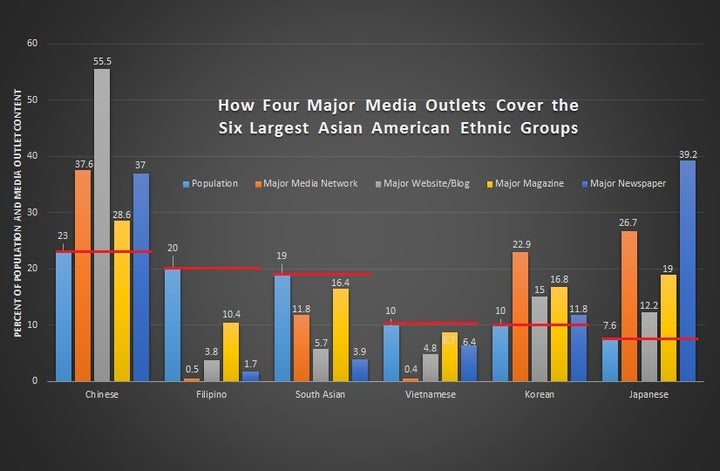A few days ago, I and four other Brown Asians criticized the New York Times for their disregard of the Brown Asian community. This continued neglect caused serious disappointment and hurts for many Brown Asians who are pained to realize that even though #thisis2016, people still don’t understand that #BrownAsiansExist. In fact, not only do Brown Asians exist, we compose half of the Asian American population!
To be clear, the outcry from Brown Asians isn’t about #thisis2016; it was a great vehicle to show America how widespread and damaging racism against Asian Americans really is. What Brown Asians are complaining about is their continued marginalization even within the Asian American community, which the New York Times video painfully showed us is still happening. Brown Asians are just tired of being unseen, unheard, and unappreciated – even by other Asians.
We are tired of the fact that when people think of Asian Americans, they seem to always think of East Asians – Chinese, Koreans, or Japanese. We’re tired of the fact that when people think of getting the Asian American perspective, Brown Asian experiences are not included or if even considered, often disregarded. We are tired of being forgotten and being treated as if we are invisible!
But - you know that nagging feeling that tends to come around whenever you complain about something? That question mark in the back of your mind asking if – maybe – you are just being overly sensitive?
I got that feeling.
So although this marginalization is something that I and many other Brown Asians have felt to be very true and real, I figured I’d look for some basic information to back up our “hunch.” To do this, I just did a simple search on the websites of four major media outlets using the six largest Asian American ethnic groups as the search terms (i.e., Chinese, Filipino, South Asian, Vietnamese, Korean, and Japanese). The media outlets I checked out are:
(1) a major media network whose reach includes multiple television channels, including a recently launched effort to cover issues specific to Asian America;
(2) an Asian American website/blog that operates as a trusted source of information on anything Asian American-related, especially topics about racism, politics, activism - stuff that gets you angry;
(3) an Asian-American magazine that has been around for over a decade; and
(4) a very influential newspaper in a very major city.
Here are the results of my search:

As you can see in the graph, the content for all four media outlets extend higher than the red line for East Asians (Chinese, Koreans, and Japanese). This indicates that for all four media outlets, stories about East Asians are disproportionately overrepresented given their population size (marked by the red line). Here are some examples:
- 55.5% of the content in the Asian American website/blog is about Chinese Americans even though they compose only 23%of the Asian American population. In contrast, only 3.8% of the content in the Asian American website/blog is about Filipino Americans even though they compose 20% of the Asian American population.
- The Asian American content of the major newspaper is 39.2% Japanese when they compose only 7.6% of the Asian American population, but only 3.9% of the newspaper’s Asian American content is on South Asians even though they compose 19% of the Asian American population.
- We also see that 22.9% of the major media network’s Asian American content is about Koreans when they compose only 10% of the Asian American population. In contrast, although Vietnamese also compose 10% of the Asian American population, only 0.4% of the major media network’s Asian American content is about Vietnamese.
This disproportionately very low representation in content given their population size is true among all four media outlets for Filipinos, South Asians, and Vietnamese. Brown Asians are disproportionately underrepresented, consistently and across the board! As can be seen in the graph, the content for all four media outlets do not even reach the red line for Brown Asians, indicating that Brown Asian stories are not covered enough by the media.
So based on this data, our hunch – the feeling that we are often treated as if we are second-class, perhaps even third-class, Asian Americans – seems to be correct.
And just like how racism against Asian Americans goes beyond the woman who told Michael Luo’s family to “Go Back to China,” the marginalization of Brown Asians also goes beyond the New York Times. This disregard and invisibility is widespread, and is clearly seen in which Asian Americans are covered by the media – whose stories are deemed as important, whose realities are validated, whose truths are shared, whose complexities are explored, and whose humanities are displayed.
We understand the importance of media in shaping society’s perceptions of the world and of all of us who are in it. In this case, we understand how media shapes who society thinks as Asian American and how society sees Asian Americans. For our specific case, we understand oh so well what media’s role is in shaping how society sees us and what to make of our brown skins. Therefore, we want to be represented in media so that our realities and experiences, struggles and victories, pains and joys – a more complete and nuanced portrait of us – can be shared with society.
This is why we want representation. This is why we are hurt whenever organizations and people – including other Asian Americans – tell us that we don’t matter. We do.
~~~~~~~~~~~~~~~~~~~~~~~~~
E.J.R. David is the author of “Brown Skin, White Minds: Filipino -/ American Postcolonial Psychology” and the editor of “Internalized Oppression: The Psychology of Marginalized Groups.” He also writes periodically for Psychology Today. Follow him on Twitter here.
